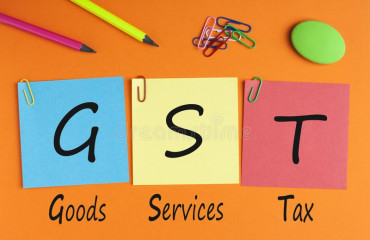
While showering heaps of praise on Goods and Services Tax (GST), Union Finance Minister Nirmala Sitharaman shared her views extensively on X platform about the legislation which came into force on July 1, 2017. She said that the tax legislation exemplifies Cooperative Federalism in India, and empowers states.
While showering heaps of praise on Goods and Services Tax (GST), Union Finance Minister Nirmala Sitharaman shared her views extensively on X platform about the legislation which came into force on July 1, 2017. She said that the tax legislation exemplifies Cooperative Federalism in India, and empowers states.
"With a 75 percent majority vote requirement, assigns one-third voting power to the Centre & two-thirds to states. Out of 52 meetings, all decisions but one was reached through consensus. As Chairperson of GST Council, I have ensured all states' voices are equally heard without bias," she wrote.
She also tried to correct the perception that all GST collections are pocketed by the Centre.
ALSO READ: India recorded about 131 billion UPI transactions in FY24, says finance minister
"It is a myth that all GST collections are pocketed by the Centre. GST contributes significantly to state revenues – States receive 100 percent of SGST collected in that state, approx. 50 percent of IGST (i.e. on inter-state trade). A significant portion of CGST, i.e., 42 percent, is devolved to the states based on the Finance Commission's recommendations," he says.
Impetus to state revenues
Union Finance Minister Sitharaman also said that GST has raised tax buoyancy from 0.72 (before GST came into force) to 1.22 (2018-23).
"Despite compensation ending, state revenues remain buoyant at 1.15. Without GST, states' revenue from subsumed taxes from FY 18-19 to 2023-24 would have been Rs. 37.5 lakh crore. With GST, states' actual revenue amounted to Rs. 46.56 lakh crore," he says.
As percentage of GDP
In terms of net and gross collection, the percentage of indirect tax of GDP has reached the levels they were prior to GST, she added.
"Despite the GST rate being less than the prescribed Revenue Neutral Rate and COVID-19 affecting the revenues, GST collections (as a % of GDP) have now reached the levels they were before GST (both net and gross). This demonstrates that the Centre & States, collectively, through better tax administration, are able to collect the same revenue with a lower burden on our taxpayers," she wrote.
ALSO READ: GST collection hits record ₹2.10 trillion in April
Amid the ongoing Lok Sabha Elections 2024, she pitched the tax legislation as an expression of Modi Govt's commitment to 'Sabka Saath, Sabka Vikas, Sabka Vishwas, Sabka Prayas'.
"Our continuous efforts are towards ensuring that new heights are scaled through better taxpayer services and increased efficiencies instead of increased taxes," she wrote.
